Energy transition technologies: the pace of progress?
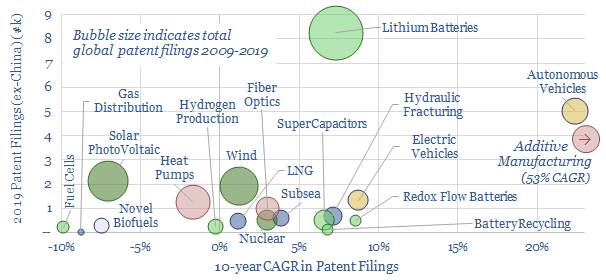
…interest has been in fuel cells and biofuels, declining at -10% pa and -7% since 2009. It remains interesting to compare the pace of progress within sub-industries; for example, more…

…interest has been in fuel cells and biofuels, declining at -10% pa and -7% since 2009. It remains interesting to compare the pace of progress within sub-industries; for example, more…
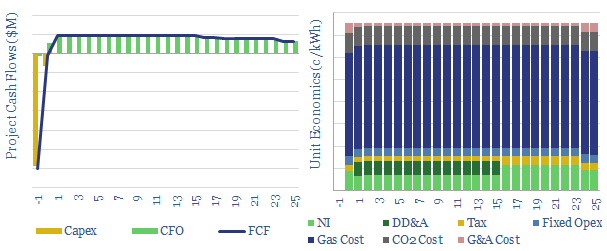
…Turbo-charged gas turbines could be among the non-obvious technologies to gain greater share as grids become more saturated with renewables, in addition to CHPs, PCMs and fuel cells, per our…
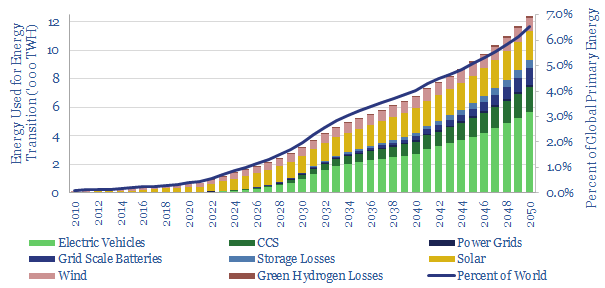
…at the anode, storage, transport, fuel cells, etc. Our chart above has <0.1% of the world’s useful energy in 2050 coming from green hydrogen. But if the number were 10%,…
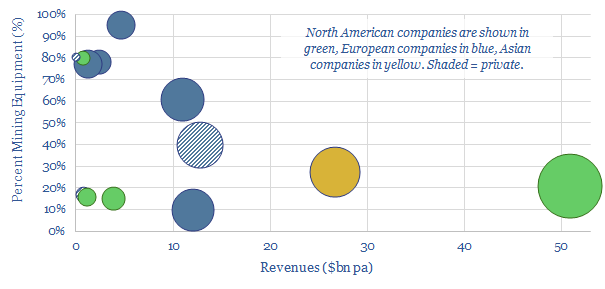
…mining equipment manufacturers in the world has noted challenges with hydrogen fuel cells, which is that they may not operate brilliantly in the extremely dusty and high-vibration mining applications. Supporting…
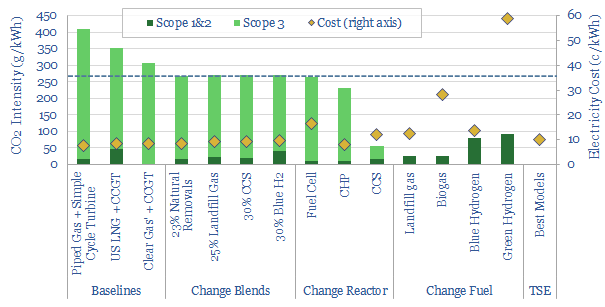
…green taxonomy is the use of CHPs, and possibly also some fuel cells, which can achieve higher efficiencies and thus attain 200-270g/kWh CO2 intensities. Also potentially helped are blends of…
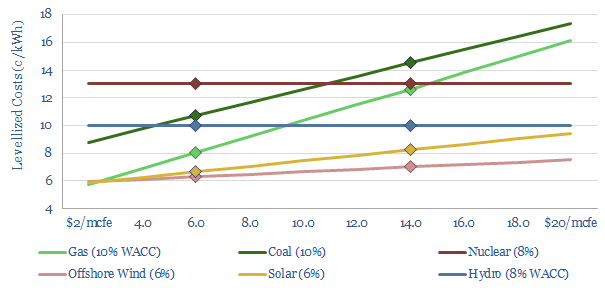
This note evaluates how sustained gas shortages could re-shape power markets (chart above). Nuclear is the greatest beneficiary, as its cost premium narrows. The balance also includes more renewables, batteries…

…technologies are accelerating fastest. Wind and solar remain heavily researched, but the technologies are maturing. The steepest deceleration of interest has been in fuel cells and biofuels. It remains interesting…

…new CO2 technologies such as CO2-EOR, oxy-combustion, carbonate fuel cells, metal organic frameworks and direct air capture. Measuring and monitoring CO2 is one of the largest challenges, hence our data-file…